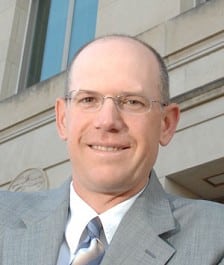The state of (Iowa’s) health-care reform

.floatimg-left-hort { float:left; } .floatimg-left-caption-hort { float:left; margin-bottom:10px; width:300px; margin-right:10px; clear:left;} .floatimg-left-vert { float:left; margin-top:10px; margin-right:15px; width:200px;} .floatimg-left-caption-vert { float:left; margin-right:10px; margin-bottom:10px; font-size: 12px; width:200px;} .floatimg-right-hort { float:right; margin-top:10px; margin-left:10px; margin-bottom:10px; width: 300px;} .floatimg-right-caption-hort { float:left; margin-right:10px; margin-bottom:10px; width: 300px; font-size: 12px; } .floatimg-right-vert { float:right; margin-top:10px; margin-left:10px; margin-bottom:10px; width: 200px;} .floatimg-right-caption-vert { float:left; margin-right:10px; margin-bottom:10px; width: 200px; font-size: 12px; } .floatimgright-sidebar { float:right; margin-top:10px; margin-left:10px; margin-bottom:10px; width: 200px; border-top-style: double; border-top-color: black; border-bottom-style: double; border-bottom-color: black;} .floatimgright-sidebar p { line-height: 115%; text-indent: 10px; } .floatimgright-sidebar h4 { font-variant:small-caps; } .pullquote { float:right; margin-top:10px; margin-left:10px; margin-bottom:10px; width: 150px; background: url(http://www.dmbusinessdaily.com/DAILY/editorial/extras/closequote.gif) no-repeat bottom right !important ; line-height: 150%; font-size: 125%; border-top: 1px solid; border-bottom: 1px solid;} .floatvidleft { float:left; margin-bottom:10px; width:325px; margin-right:10px; clear:left;} .floatvidright { float:right; margin-bottom:10px; width:325px; margin-right:10px; clear:left;}
Just a few months after Tom Newton was appointed as the state’s top health official in April 2007, he began overseeing a legislative commission charged with addressing the cost, quality and accessibility of health care in Iowa.
At the time, it was more like “being thrown into it,” said Newton, director of the Iowa Department of Public Health, but now he calls the experience valuable. The work of that 25-member panel, the Legislative Commission on Affordable Health Care Plans for Small Businesses and Families, set the stage for state-level reform efforts that continue today, said Newton.
“It really was the springboard for the 2008 health-care reform legislation (House File 2539), which assigned a number of responsibilities to the Iowa Department of Public Health,” he said. Among the legislative accomplishments were an expansion of children’s health-care coverage and the formation of nine advisory councils that are analyzing key pieces of the health-care coverage puzzle.
Although those involved in reform at the state level say they’re following the federal reform debate closely, there’s also much work to be done in Iowa, and they’re not going to wait until the dust settles on possible federal reform.
One of the most visible results of the state’s health-care reform efforts has been the expansion of the Healthy and Well Kids in Iowa (hawk-i) program. On July 1, eligibility for the program was expanded to uninsured children in families with incomes up to 300 percent of the federal poverty levels, up from the previous 200 percent threshold. The change means a family of three making up to nearly $53,000 would qualify for the low-cost insurance.
The Iowa Department of Human Services has estimated that more than 2,500 additional children will qualify for hawk-i under the expanded eligibility guidelines. Department spokesman Roger Munns said it’s too early to determine the actual impact of the eligibility expansion. However, total hawk-i enrollment has remained relatively flat at nearly 22,500 children over the past year, while the number of children in the Medicaid program has increased by more than 4,000, which officials say is largely due to the recession. In total, more than 244,000 children, or about one out of every three children in Iowa, are covered under some government health-care insurance program, Munns said.
Iowa already has the second-highest child-coverage rate of any state in the nation, with approximately 95 percent of children covered through either private or government insurance, according to Families USA.
Earlier this year, the Legislature passed Senate File 389, which created the Iowa Health Care Coverage Commission, replacing the Iowa Choice Heath Care Coverage Advisory Council that was formed in 2008. Though the Iowa Choice Council focused largely on expanding coverage for children, the new commission will concentrate on improving access to coverage for adults, Newton said.
“It’s probably raging incrementalism at its best,” Newton said. “It’s like eating an elephant; you can’t do it all at once. I think the Legislature recognizes this and is trying to do it in phases. And sometimes the people you get to the table to focus on adults are not the same as those you would have for kids.”
Among the 11 voting members on the Iowa Health Care Coverage Commission is Joe Teeling, chairman and CEO of Bearence Management Group, a West Des Moines-based insurance and financial services firm. He has the distinction of being the only person to serve on all three of the commissions that have been formed over the past three years.
“All of these groups to this point have recognized a few things,” said Teeling, who has worked in the insurance industry for 30 years. “We have very good quality of care in this state. Secondly, our insurance costs, though high, are still very low compared to the rest of the country. And third, our uninsured rate, though unacceptable, is still very low compared to other states.
“So the original commission and the advisory council took the view last year that we wanted to build on our strengths and do no harm. I’m hoping that this next group here adopts that similar vision: We’ve got a good system here; let’s improve it.”
Teeling said the topic of federal reform came up at the commission’s initial meeting on Sept. 9, as it has with each of the other two panels.
“Our resolution to that is that there’s a lot of work to be done here in Iowa,” he said. “Health care is a local phenomenon; it’s delivered locally. Regardless of what the federal government comes up with, there will be plenty of things left to the state’s devices.”
States have proved to be “very good laboratories” for health reform, said Dr. Andrea McGuire, chief medical officer of American Republic Insurance Co., who is serving as an alternate on the commission to Michael Abbott, the company’s president and CEO.
“It’s hard to have one-size-fits-all,” McGuire said. “Our state, for instance, has less than 10 percent uninsured, so we’re among the top five states in least uninsured. So we have the opportunity to do things in Iowa that they can’t do in Texas, which has 25 percent uninsured.”
Though state revenues are down, there hasn’t been a lot of discussion about how to pay for expanded coverage in Iowa, McGuire said.
“It’s a problem,” she said. “Our charge was to try to figure out how to get these people insured. It sounded like it would fall more to the Legislature how that would be funded. First you have to figure out how to do it, I suppose, and then how to pay for it.”
The commission will likely pull together data from the nine advisory councils that have been meeting for the past year, said Newton, who is serving as a nonvoting member of the commission.
Among the key advisory councils, Newton said, is one addressing prevention and chronic care, while another council is addressing how to get more people to more frequently visit their primary care physician as their “medical home.” Other councils are tasked with creating a statewide electronic health records system and addressing the health-care worker shortage in the state. (see list)
Three of the nine advisory councils have already submitted preliminary reports as required by the Legislature. The reports are available on the Iowa Department of Public Health Web site at www.idph.state.ia.us.
“I’ve been very impressed with the work they’ve done so far and the ideas that have come forward,” Newton said, adding that they’re works in progress.
“We can’t expect them to have complete, final documents when they’ve only met a few times,” he said. “And there are competing ideas that come forward, so you have to give these groups time to flesh out where they need to go.”
The councils have identified some steps that can be taken to address health-care costs. For instance, the Prevention and Chronic Care Management Advisory Council identified obesity and diabetes as the top priorities for prevention and chronic care management, and outlined steps the state can take to address those issues.
Teeling said prevention and wellness have been consistent themes that each of the health-care commissions has heard.
“One of the things that’s been drilled into us over the past two years is that 75 cents of every dollar spent on health care in the United States is on chronic disease,” he said. “The cost is the problem; that’s why people are uninsured, because they can’t afford it. We’re never going to get people covered if we can’t get a handle on costs. … I think 75 percent of our efforts should be spent on 75 percent of the cost. I’m going to do my best to put that point front and center.”







